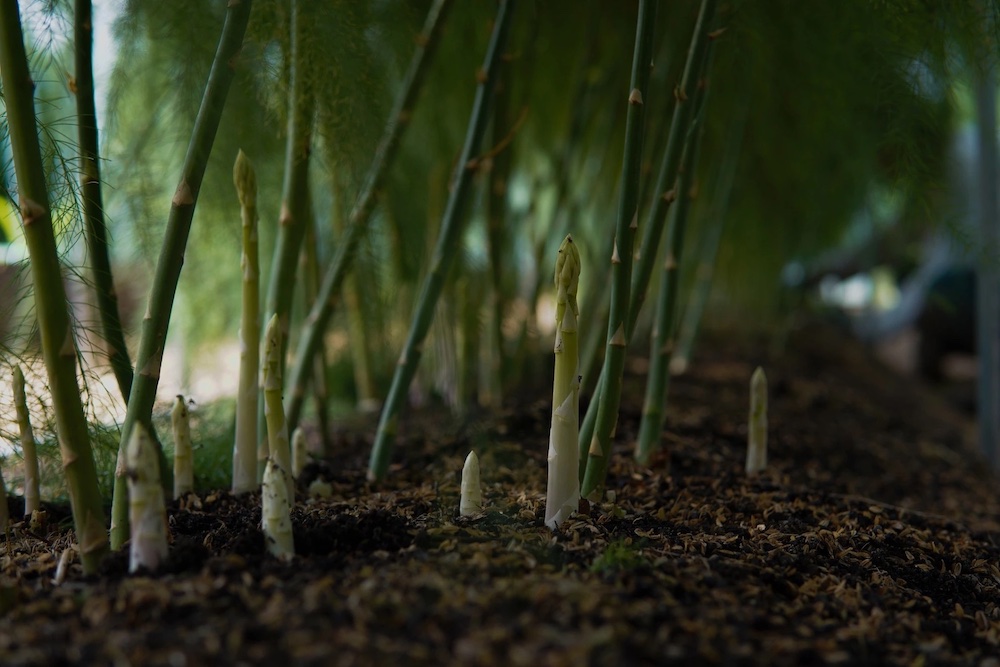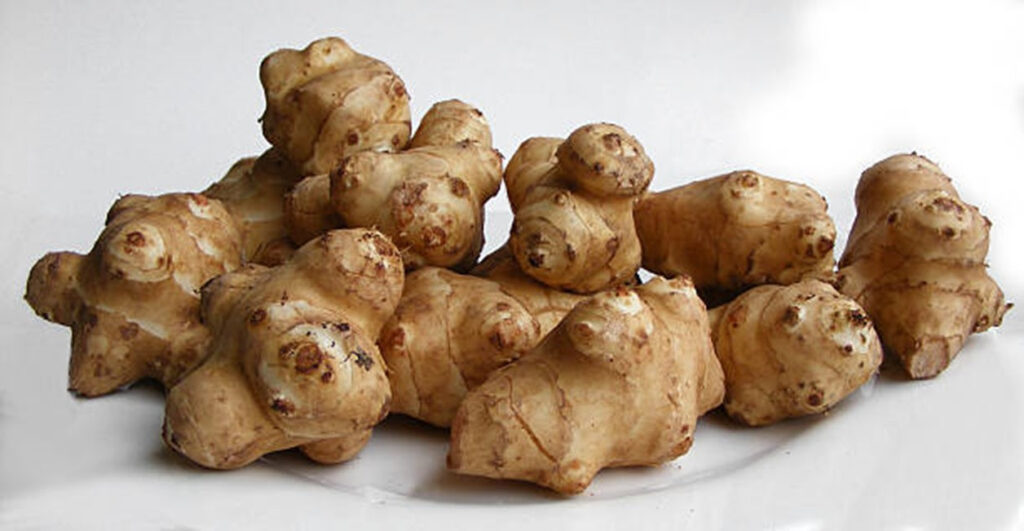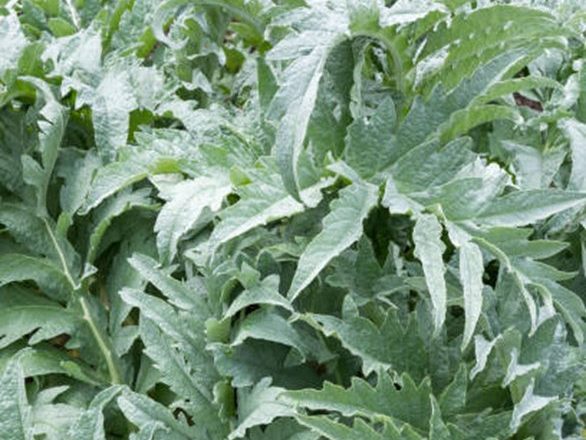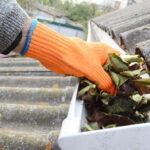Thanks to the University of Maryland/Maryland Grows this informative article on perennial vegetables.

Most of us plan our gardens each year with abundant annual vegetables to harvest and enjoy. There are, however, several perennial vegetables you may want to consider adding to the mix, some familiar and others, perhaps, less so.
Perennial vegetables have some attractive benefits: they tend to be low maintenance, are generally easy to cultivate, high-yielding, and often more pest and disease resistant than their annual brethren. On the downside, they can be slow to establish and, if they do succumb to disease, will often need to be removed.
One critical consideration in planting perennial vegetables is location. These are perennials and once established some will not be easy to relocate or, as in the case of sunchokes, to eradicate, so site them thoughtfully. And be certain to clear away any perennial weeds before planting.
Following are just a few selections for Maryland, ones I have personal experience growing. The most comprehensive and enlightening reference by far is Eric Toensmeier’s Perennial Vegetables (2007, Chelsea Green Publishing), which offers a fascinating window into the many options available for our area.
Rhubarb (Rheum rhabarbarum)

Yes, rhubarb is a vegetable although we use it more like a fruit, sweetened in pies and sauces. (An annual rhubarb crisp endeared my neighbors to me!) It is the stalks we cut and use as the leaves and even though much of the flower heads are toxic to people and animals.
Root crowns should be sited in full sun with ample space (plant 3 feet apart) as the clumps can grow to be 3-5 feet wide. Rhubarb really prefers cold climates and our Zone 7 is about as far south as it will grow happily. A heavy feeder, it is good to provide extra nutrients with compost annually.
Once mature, the attractive large-leafed clumps can be divided for propagation, which should be done every few years to re-energize the plant. Two or three plants will keep you in pies (but try it in savory stews and soups, too). Some growers recommend removing the showy flower stalks once they open. To harvest, twist or cut the stalk at the base and be certain to remove all of the leaves. Rhubarb will die to the ground in winter and in early spring you will see its lovely red buds swelling up from the earth. And you will know it is spring!
Ramps (Allium tricoccum)

Here it is, an easy-to-grow shade-loving vegetable that also happens to be delicious! Often referred to as wild leeks, ramps are native to eastern and central North America. These early spring bulbs have wide leaves compared to most onions, growing to about 10” long. They die back with the coming of summer.
Ramps are found in the wild in moist deciduous forests. They prefer rich, moist soil, much like woodland humus, and form small clumps that can slowly spread to form large colonies. Harvest the whole plant leaving some bulbs for next year, or simply harvest some leaves. The smallish bulbs are like onions or garlic, the leaves like scallions or leeks.
Ramps are being over-harvested in the wild. This is yet another good reason to start your own colony (and move some into that forested land nearby).
Sunchoke (Helianthus tuberosus)

Also known as Jerusalem artichoke (although neither an artichoke or from Jerusalem, go figure). These edible tubers are native to northeastern North America. Sunchokes grow 6-10 feet tall with cheery sunflower-like blooms in full sun or light shade. If sited in a wind prone area they will need support, or you can prune them back by a third to encourage bushier growth.

Sunchokes are very productive. Some varieties have knobby tubers while others are smoother (and easier to clean). They are sweet to the taste and rather nutty when roasted. Anything you can do with potatoes you can probably do with sunchokes. Harvest annually leaving some pieces of tubers with eyes 1-3 feet apart for next year’s crop. The flavor is best after a hard frost. A word about inulin: sunchoke tubers are high in inulin, a type of starch, which is not digestible by humans and can cause gas. Some people do not tolerate it well. Inulin does increase the ability to absorb calcium.
Here is where caution is required! Left to their own devices sunchokes will form large colonies – they are best treated like a mint using containing methods. I grew mine in a large raised bed and they gave me more tubers than I could use and a glorious mass of tall yellow flowers.
Cardoons (Cynara cardunculus)

Found in the wild all along the Mediterranean, cardoons are more popular as a food crop in Southern Europe and North Africa where they are native. They are related to globe artichokes but are grown for the edible stalks rather than the flower heads, which taste like artichokes and are used like celery. Their dramatic spiny silvery foliage and beautiful thistle-like flowers, however, have earned them a place in many gardens. Perhaps as architectural interest in a border? Bonus: Deer won’t touch them.
Cardoons do best in full sun and well-drained soil, although they tolerate some light shade. Start them from seed 6-8 weeks before the last frost and transplant them after the last frost date. The first year they can grow 3-5 feet tall and 3 feet wide, so plan some space. Plants have about a five-year productive life span. They can be divided in spring.
For eating, the stalks are usually blanched (protected from sunlight), to make them more tender and easier to cook, in the fall. This is done by tying the plant into a bundle and wrapping it with cardboard or newspaper to 18 inches then leaving it alone for a month. Hill up the soil around the stems. Cut the stalks off at ground level. Alternatively, you can harvest just some of the fleshy leaf stalks. Clean the leafy bits from the stalk (it will look like a celery stalk), peel away the outer skin, and parboil them before using them in recipes to mitigate any bitterness.
Asparagus (Asparagus officinalis)

Last on this list but probably the most widely known and loved perennial vegetable: asparagus. This edible shoot is a native of Eurasia but has naturalized throughout North America.
Asparagus can live for 15 years and longer, so situate it thoughtfully. (I well remember helping my dad pull out an ancient asparagus bed as a kid. Suffice to say it involved a tractor and chains.) It requires full sun and good drainage. Annual applications of compost or well-rotted manure keep it productive and plentiful water all season will keep it happy. It is easy to grow from seed but generally, year-old rooted crowns are planted in early spring to speed the time to harvest. Plant them 15-18 inches apart in wide beds or rows, with 4-5 feet between rows. All male varieties will not seed (females have berries) and tend to be more productive and disease-resistant. A broad selection of asparagus is available including lovely purple varieties (white spears are blanched).
Spears develop from the underground crowns in early spring. Do not harvest at all in year one and harvest lightly in years two and three. Spears should be snapped off or cut at 6-8 inches. After 8-10 weeks let the spears grow. They will form a lovely, tall, fern-like frond. After frost, the foliage will turn yellow, and at that point, it can be cut down to 2 inches. Asparagus can have a number of pests and diseases. Purchase resistant varieties, keep patches weeded and remove all foliage after frost for best prevention.
In Conclusion
These are but a few of the interesting options available to you!
More information about asparagus is on the Home & Garden Information Center website.
By Deana Karras, Baltimore County Master Gardener
Oh by the way, I’m never too busy for any of your referrals! If you are looking to buy or sell your home (with or without a garden), contact Gigi today.








Recent Comments